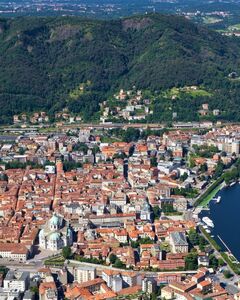
monuments near Crotto dei Platani


The church is located next to the parish church of SS. Quirico e Giulitta and is accessed by three steps. It dates from the fourteenth century and was enlarged with the construction of two bays in the middle of the sixteenth century. Noteworthy are...
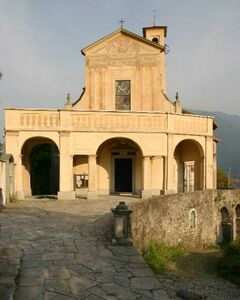
With origins in the 17th century and remodelled later with an image of the patron saint on the facade by Bernardino Barelli. Noteworthy are the altar sculptures, frescoes, stucco, oil paintings, a Renaissance tabernacle and the wooden reliquary...

Although early in Christian origin, this church collapsed due to erosion at the end of the 16th century and was completely rebuilt in the Baroque style. Of note, are lavish frescos, sculpture wooden inlaid furniture and a stone font presbytery....
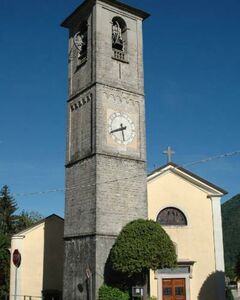
The San Tomaso Park occupies the lower foothills of the ridge of Corno Birone (1,116 m), Mount Rai (1,250 m), Mount Prà Santo (1,245 m) and the Colma di Val Ravella (939 m). The park offers a beautiful landscape from just a short distance from the...
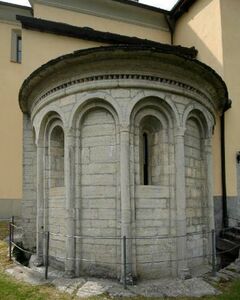
Parish church built in the sixteenth century and later remodeled. The choir has a fresco by painter G. Quaglio. Next to the parish is the Oratory dedicated to Santa Marta with a fascinating frescoed facade in bas-relief from the sixteenth century,...

Built in the Romanesque period, between the 11 and 12th centuries, but underwent many changes and expansions to its current appearance. It was the first parish church of Molina; over the centuries, the population of this village moved increasingly...
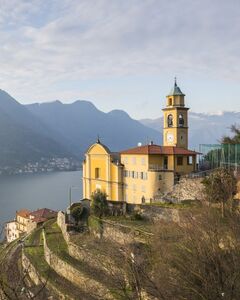
Built between 1723 and 1744 and consecrated by Bishop Albrici Pellegrini in 1764. The façade, in the Baroque style, is characterized by four pilasters and from the portal flanked by two niches and surmounted by a sundial. Above it is the date in...
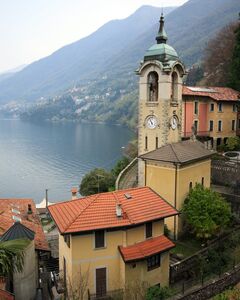
Church built between 1910 and 1931 in Palanzo, a small village above Faggeto Lario. The short hike affords great views of the lake from a a nearby park....

The Sacred Mount of Ossuccio is one of the nine sacri monti in the Italian regions of Lombardy and Piedmont which were inscribed on the UNESCO list of World Heritage Sites in 2003. The devotional complex is located on a prealpine crag some 200...
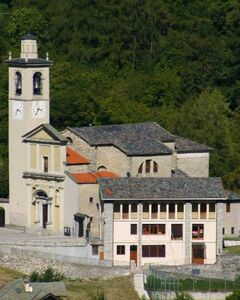
The church was built in the 11th Century but has been almost comepletely rebuilt in the 17th century. Inside there are splendid coloured "scagliole". In the Intelvi Valley the Maestri Intelvesi used a special material called “scagliola” or false...
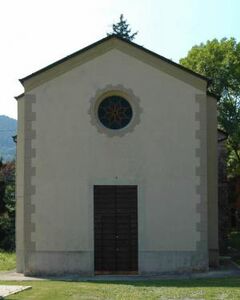
The church of St. Agatha is opposite to the parish of St. Stephen and is oriented to the west. It is a small building with gabled facade, two bays, two niches in the first bay, two chapels rectangular plan in the second and a presbytery with a...
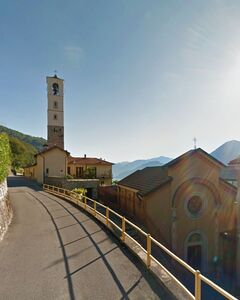
On the ancient road that ran through the Val d'Intelvi, between Biazzeno and Dizzasco stands the parish church SS. Pietro and Paolo with its tall bell tower. It stands on a hillock with a wide view of the lake. The bell tower stands apart from the...
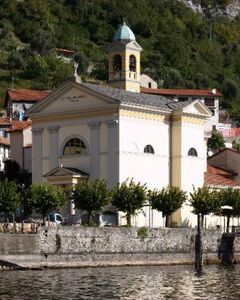
The church stands on the lake but you can also reach it from the antique center via small alleyways and steps. Next to the bell tower the original Romanseque bell tower can still be seen....

Right at the beginning of the town of Castiglione, with the green Intelvi valley as a back ground, stands the oratory of the Madonna del Restello built in the 17th century to thank the Madonna for the end of a plague that had infested the valley....
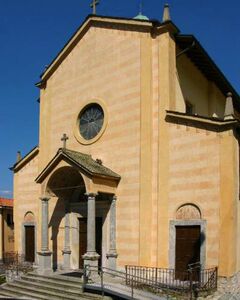
Parish church built in the sixteenth century and later remodeled. The choir has a fresco by painter G. Quaglio. Next to the parish is the Oratory dedicated to Santa Marta with a fascinating frescoed facade in bas-relief from the sixteenth century,...
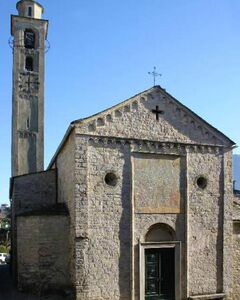
This building is the parish church of Ossuccio and was built after the church bearing the same name, situated on the Comacina Island. It dates back to the 12th century and during the restoration works of 1959 many parts of the Romanesque building...

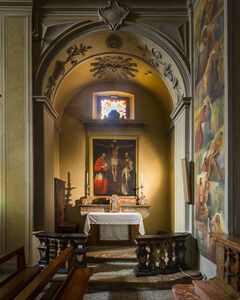
The construction of the church began in 1791 and ended in 1823 requiring the works of several architects: Clemente Isacchi, Giuseppe Pollack, Giuseppe Bovara and Simone Cantoni. The church hosts a crucifixion of 1879 by Mosè Bianchi and a painting...
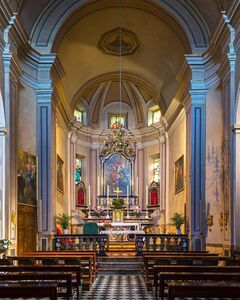
St. George, as with other holy warriors (Michael and Martin) was highly revered by the Lombards. The present church was built in the sixteenth century on the site of a former place of worship; it underwent other changes in following years,...
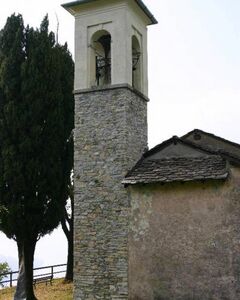
Built in the second half of the sixteenth century, this church was remodeled and expanded in later periods. Distinct for its large columns and the sixteenth round arches on the porch....

The church of Saints Peter and Paul was believed to have been founded in the eleventh century by Bishop Rainald and consecrated in 1095 by Pope Urban II, who was traveling to Clermont-Ferrand to call the first crusade. Over the centuries, the...

The Church of Saints Nazario and Celso is just a short walk away from the waters of Lake Como, near the harbor in the old town of Brienno. Some documents attest to the presence of a church since the end of the thirteenth century, the Romanesque...
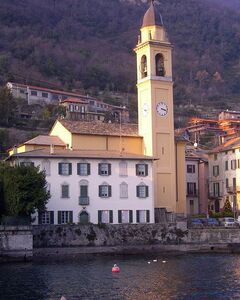
The parish church is located in the center of the country.Built in the seventeenth century, is decorated with prestigious and stucco friezes of Stefano Salterio (XVIII century) and also preserves works of painting and sculpture of the eighteenth...

Situated in the hamlet of Borgo, built on the previous Romanesque building, was the parish from the end of the fifteenth century. A single nave, has suffered repeated rearrangements. Inside frescoes Fiammenghino and an altarpiece of the sixteenth...

Urio, the part of the town that lies south of Carate, is characterized by the Romanesque bell tower of the Saints Quirico and Giulitta church that stands close to the lake. Rebuilt in 1865 from an original Romanesque church with two towers and a...
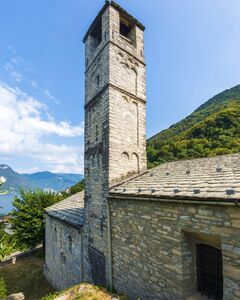

Built on location of a church dating back to the 16th century, Santi Epimaco e Girdino was completely rebuilt in the second half of the 18th century. The original parish church is located in the lower part of town, near the lake. For this reason,...
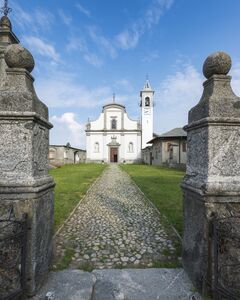
The current building was built on the site previously occupied by an older church: its construction began in 1593 and lasted until the next century (1617), when it became an independent parish. In the eighteenth century underwent a partial...
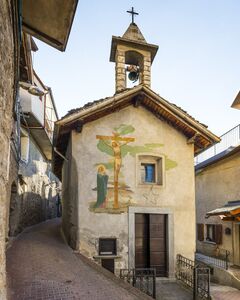
The small chapel is located in the historic center of Veleso, at the intersection of several streets. The façade is decorated with a fresco depicting the Crucifixion....
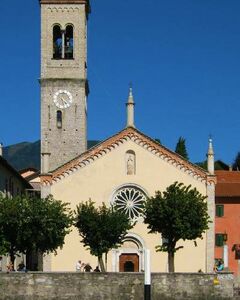
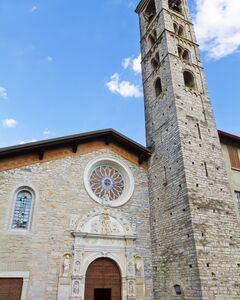
The village contains this interesting church that dates back to the 14th century. It has a fine Romanesque bell tower and a decorated Renaissance portal. An ancient chest behind the altar preserves a precious reliquary, a nail of the Holy Cross....

The church, that stands near the lake, contains interesting frescoes, and the outside is characterized by an open porch to the lake with a double lancetwindow and a tall stone bell tower. It was the church of the community, which remained...
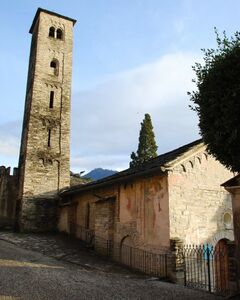
Situated in the hamlet of Vignola, along the ancient Via Regina, it preserves its ancient structure in bare stone decorated with small arches. The exterior has remains of Renaissance and late Gothic frescos. The interior is divided into two naves...

Next to Lenno’s parish church is the baptistery, dating back to the second half of the 11th century and dedicated to St. John the Evangelist. The outside is simple and plain, with a square bell-tower and an apse on the north side. On the left side...
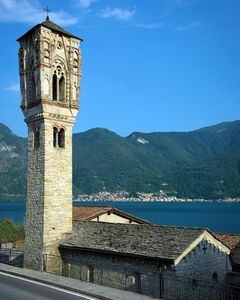
This Romanesque church with emblematic bell tower was once a lodging for pilgrims making their way to Rome along Lake Como’s western shore. The history of the church has always been bound with contiguous ancient medieval hospice. The single nave...
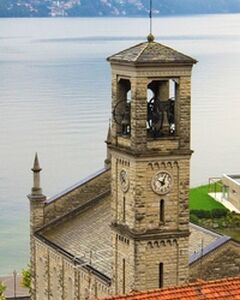
Parish church of Argegno made with Moltrasio stone in the Neo-romanic Style. A construction in neo-Romanesque style with a gabled facade enhanced by a rose window depicting saints. On the front of the church is a mosaic of the four Evangelists, the...
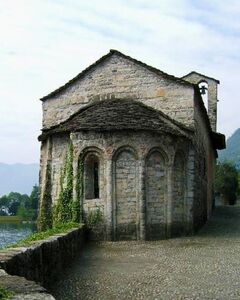
This little Romanesque church is built directly on the lake and still preserves its original structure. Worth seeing is not only the sail bell tower, but also the several traces of frescoes on the internal and external walls, among which stands out...
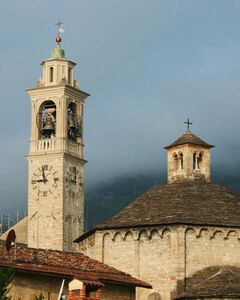
The parish church stands in the XI Febbraio square, near the baptistery, overlooking the renowned Venere Gulf, from where you are presented with an enchanting view. The church was built in the 5th or 6th century on the ruins of a watering place,...
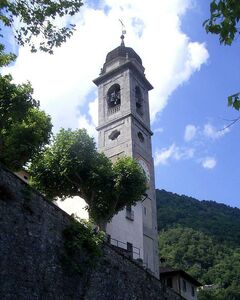
This sanctuary is part of a series of shrines along a one kilometer cobble stoned walkway. The shrines depict scenes of the Madonna’s and Christ’s life and are represented by frescos and natural size statues made of stucco and terracotta. The...

Located in the upper part of the village of Lenno. Once it was called monastery of Roncate after the name of the hamlet where it was built, but later it became the “Abbazia dell’Acquafredda" (the ‘Freshwater abbey’), because of a fresh source near...
Designed by architect Cesare Cattaneo and painter Mario Radice in 1935. It is a complex construction of circular elements whose harmonious composition consists of four spheres arranged on each other with alternate horizontal rings. Originally...
A series of modern frescoes (2007) painted on houses in the town of Taceno that endeavour to preserve traditions, legends and history of craftsmanship and commercial work. Unlike their counterparts in Parlasco that recount the legend of Lasco the...
Three tombs belonging to the aristocratic Andreani Family located outside the Church of St Thomas of Beckett and a castle belonging to the same family. The monuments, know as “arks” are important evidence of Lombardy sculpture that were erected...
Geological formations resembling mushrooms created when water running off the slopes was diverted by large boulders. The boulders imposing size and weight protected the underlying material from erosion and gave rise to the characteristic shape of a...
It’s a boulder of pyramidal shape that owes its curious name to a crescent engraved on one side, of natural origin, accompanied by the letters PLDB (Moon Stone of Bellagio) and the date 1782, which commemorates the end of a period of dispute between...
Monument to the fallen of World War I, designed in 1926 by architect Giuseppe Terragni and built between 1928 and 1931. It consists of a long stone staircase and river pebbles surrounded by cypress trees. The staircase consists of four flights and...
Monument to commemorate the victims of World War II and resistance movements. The monument is a project of Milan sculptor Gianni Colombo. It is located in a park by the lake. It combines stones from Nazi concentration camps and city of Hiroshima...
Daniel Libeskind created this dazzling 16.5 meter (54 feet) high stainless steel sculpture near Piazza Cavour, Como. The public monument, the first contemporary work ever to be installed in Como, is an homage to famed scientist Alexander Volta who...
The burial town where Alessandro Volta is buried was originally called Camnago, and took the name of Camnago Volta in 1863 in honour of this great scientist. The mausoleum, a temple of neoclassic style, was finished in 1831, decorated with statues...
Parlasco is one of the smallest Italian towns located in the Regional Park of the Northern Grigna in Valsassina. It is on the main road connecting Lake Lecco to Valsassina and joins Alpe Cainallo with Cortenova. Myth and reality are perfectly mixed...
Born in Como, Alessandro Giuseppe Antonio Anastasio Volta was an Italian physicist credited with the invention of the first electrical battery, the Voltaic pile, which he invented in 1799. With this invention Volta proved that electricity could be...
Immediately after the death of Alessandro Manzoni on May 22, 1873, the City Council of Lecco met and approved a monument to the writer that had given so much prestige to the city. The committee, headed by Antonio Stoppani, collected donations for...
Monument dedicated to the weaver of Francesco Somaini, where on the banks of the river Senagra, had one of its oldest and most prestigious silk factories. In the marble top is a negative image of a weaver, while below is fabric draping to the ground....
Sculpture dedicated to disabled service people. Roughly translation on the plaque goes like this: "One hand is actively serving the country in defense of institutional values. The other hand is wounded in the line of duty." The monument is the most...
In 1931, Giuseppe Terragni and his brother were asked by the fascists to design a monument for the victims of World War I. Their design was based on a sketch of the Italian futurist Antonio Sant'Elia, whose sketches showed modernity, dynamics and...
The Volta Lighthouse stands on a hill in San Maurizio, 150 metres above Brunate. From Brunate you can follow a walking path up to the lighthouse and it takes less than 30 minutes to walk there. You can pay an admission and climb to the top of the...
Here, a black cross marks the spot where Benito Mussolini was shot and killed (along with his lover Claretta Petacci) by partisans, marking the last stand of the Fascist dictator's rule over Italy. Actually, he wasn't really the ruler of Italy at...